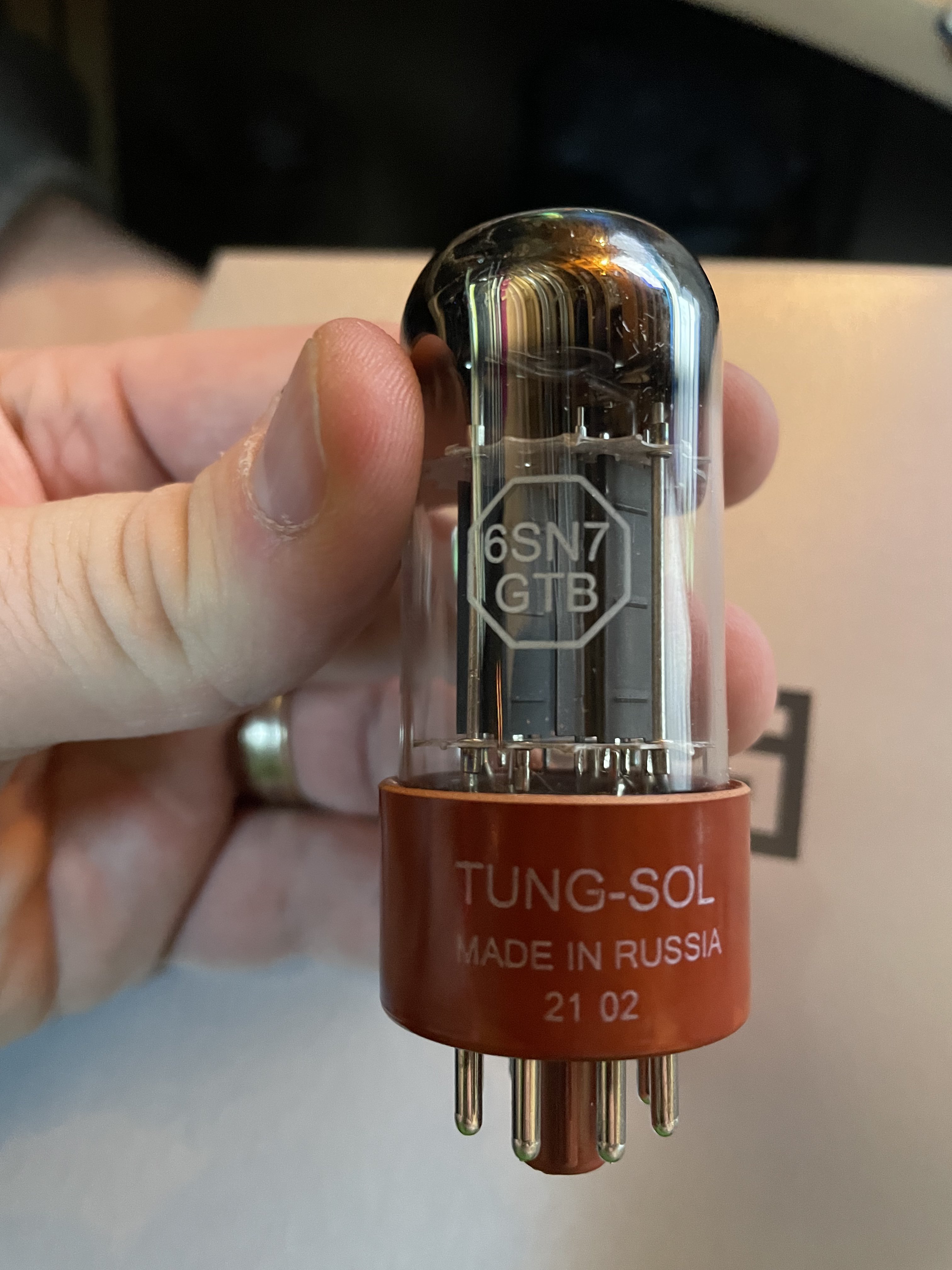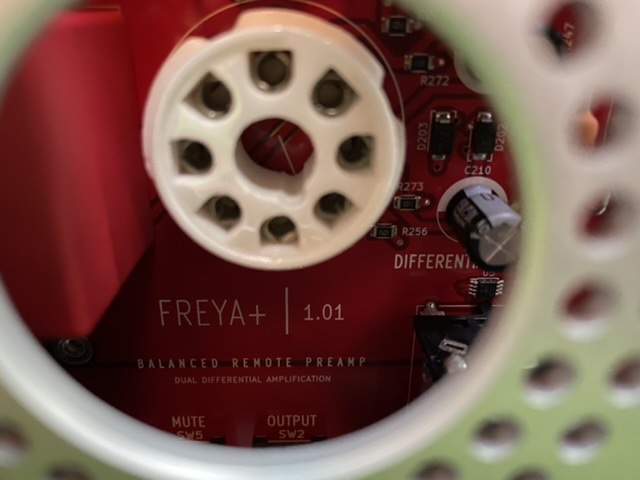I recently purchased a Freya + as a B-stock item, and it arrived within a week of ordering the preamp. I just couldn't wait the long lead time at the time for a new unit. Anyway, I can't find any blemishes on the chassis and it was packed like a brand new unit with what looks like a new quartet of JJ 6SN7 tubes. It must have been a return.
Instead of using the stock JJ 6SN7's, I installed two matched OS GE gray plate side flat D getter 6SN7GTB tubes in the differential voltage gain positions (right side) and two matched new production Tung Sol 6SN7 tubes in the output buffer positions (left side). I initially used octal socket savers from Eurotubes in Portland, OR to elevate the tubes above the chassis to keep the chassis from any additional heat radiating from the tubes. Later on, I took them out as most of the heat generated using the Freya + in tube mode radiates from the regulated power supply underneath the top cover, and not from the tubes themselves.
For connections, I wanted full balanced connections from my DAC to my power amplifier. I used two pairs of DIY Mogami 2549/Switchcraft XLR balanced cables to connect my SMSL SU-8 Version 2 DAC to the Freya +, and the Freya + to my Pass DIY Aleph J Class A power amp that drives my modified Klipsch Forte II speakers.
I have a Raspberry Pi 4 running Volumio connected via USB to my SMSL SU-8 DAC. I started off with the Freya + running in the differential JFET buffer mode, and I really like the clarity and large, deep soundstage. the bass response is very good and I really appreciate the black background with the all-balanced connections. Operating the Freya + with the nice metal bodied remote is very straightforward. I am not sure why some people have complained about the clicking noise of the 128-step volume attenuator. I found that it works very well with excellent channel balance. Overall, the differential JFET buffer mode presents a musical presentation with great tonality, timing, and great detail.
After running about two hours, I switched the Freya + into differential tube mode, and the sound was initially a little edgy in the upper midrange with some sibilance, but over the course of 30-60 minutes, the sound smoothed out significantly. The soundstage started to open up to extend beyond my speakers side-to-side and well beyond the back wall. The tone took on a creamier richness if I can call it that. As others have said, the Freya + in tube mode will get warm--literally. I could place my hand over the power supply area where most of the the heat is emanating and keep it there, so it wasn't scorching hot, but definitely warm. But then, I also have a Pass DIY Aleph J with some hefty heat sinks radiating a lot of heat too. The combination of the Freya + driving my Pass DIY Aleph J sounds beautiful. I can play anything from blues to jazz, to rock to symphonic classical, and the music is so engaging and organic.
I have listened to lots of vinyl playing on my Denon DJ VL12 Prime direct drive turntable connected to my Audio Research PH5 tube phono stage and the Freya +. It just gets better with an analog source. Separation between performers is excellent and the fine detail and tonality of the music comes through very clearly. I hate to say it, but music sounds better playing through the Freya + compared to my Audio Research LS7 tube line stage using ARC-matched and tested 6922 tubes. With the balanced connections, I have a black background, and maybe this is what allows me to hear things in recordings I hadn't heard before. Maybe it's because the LS7 only has single-ended RCA connections. I also have a refurbished McIntosh MC240 tube power amp to connect to the Freya + using RCA single ended interconnects. I have yet to try that combination.
In my experience, the sound really settled in nicely after 20+ hours of cumulative playing time. The jury is still out on long term reliability. For now, I have to say I am very impressed with the build quality, the Schiit aesthetics, and more importantly, what I am hearing from this $899 preamp.























 I'm going to leave it like this all week and see what I think next weekend.
I'm going to leave it like this all week and see what I think next weekend.



